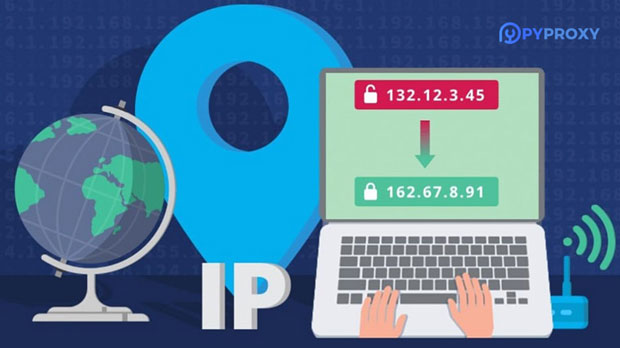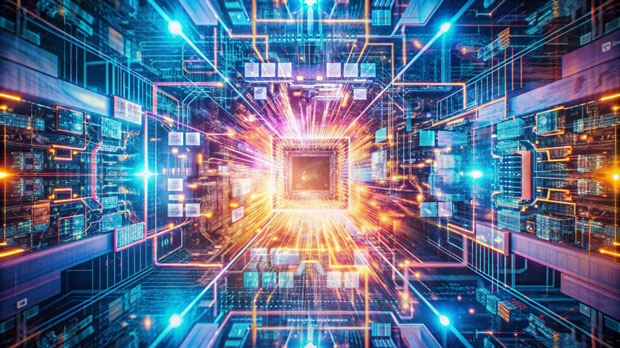In today’s rapidly evolving internet landscape, digital privacy and security have become crucial concerns for businesses and individuals alike. The practice of IP rotation, when combined with residential and data center proxies, has emerged as a powerful solution for safeguarding online activities, ensuring anonymity, and improving performance for various online operations. By rotating IP addresses automatically through a mixture of residential and data center proxies, users can maintain a consistent and safe browsing experience while circumventing regional restrictions, preventing rate-limiting, and reducing the risk of IP bans. This article explores the practical application and benefits of this combination, offering insights into how it can enhance digital strategies for businesses and individuals. Understanding the Basics of IP RotationIP rotation refers to the process of regularly changing the IP address used by a device or server to communicate with the internet. This method helps users avoid being detected or blocked by websites that may implement anti-scraping, fraud prevention, or geographic restrictions. By switching between different IPs, users can simulate traffic from multiple sources, making it harder for their activities to be tracked or flagged.There are two common types of IP addresses used for rotation: residential proxies and data center proxies. Each type offers distinct advantages and disadvantages, and combining them enhances the effectiveness of IP rotation.Residential Proxies: Authentic and Distributed IP AddressesResidential proxies are IP addresses assigned by Internet Service Providers (ISPs) to homeowners. These addresses are typically real, geographically distributed IPs that can mimic the browsing habits of real users. When combined with automatic IP rotation, residential proxies offer a high degree of anonymity and reliability.One of the most significant advantages of residential proxies is their ability to avoid detection. Since these IPs appear as if they are coming from actual home users, websites and services are less likely to flag or block the traffic, even if large-scale scraping or data extraction is being carried out. Residential proxies are particularly effective in circumventing geographical restrictions or CAPTCHAs, making them an ideal choice for tasks like ad verification, web scraping, or managing multiple social media accounts.However, residential proxies tend to be slower and more expensive compared to data center proxies, primarily due to their nature of being sourced from individual residential connections.Data Center Proxies: Speed and ScalabilityData center proxies, on the other hand, are IP addresses provided by data centers and not tied to any individual ISP or residential connection. These proxies are typically faster and more cost-effective than residential proxies, as they are designed for high-volume, low-latency operations.Data center proxies are widely used for tasks that require quick connections, such as running bots, scraping data from large websites, or automating online tasks. The scalability and speed of data center proxies make them ideal for businesses that need to handle large amounts of data or traffic across multiple servers.However, data center proxies are more likely to be detected and blocked by websites due to their association with data centers, which are commonly known to host automated bots. Despite this, when used in conjunction with residential proxies and automatic IP rotation, they can still offer valuable benefits, particularly in cases where speed is a critical factor.Combining Residential and Data Center Proxies with Automatic IP RotationWhen residential proxies and data center proxies are combined with an automatic IP rotation system, the result is a robust and efficient solution for businesses and individuals looking to enhance their online operations. The key benefit of combining these two types of proxies lies in their complementary strengths. Residential proxies offer authenticity and help avoid detection, while data center proxies provide high speed and scalability. By automatically rotating between both types of proxies, users can optimize their IP management strategy, balancing the need for anonymity and reliability with the need for fast, scalable connections. This approach helps businesses scale their online operations, protect their data from potential threats, and ensure smooth interactions across the web.Practical Applications of Automatic IP Rotation with Proxies1. Web Scraping and Data MiningWeb scraping is a common practice for gathering data from websites for various purposes, including market research, competitor analysis, and product comparison. However, many websites impose restrictions on scraping activities, such as rate limits, CAPTCHA challenges, or IP bans. By using a combination of residential and data center proxies with automatic IP rotation, businesses can bypass these restrictions and collect large volumes of data without triggering alarms or getting blocked.Automatic IP rotation ensures that each request comes from a different IP, making it harder for websites to identify and block the scraping operation. This increases the efficiency of web scraping efforts and allows businesses to access valuable data without interruptions.2. Social Media ManagementManaging multiple social media accounts requires handling a large number of login attempts, interactions, and data requests. Social platforms, such as Instagram, Facebook, and Twitter, often impose limits on the number of actions that can be performed in a certain time frame. If these limits are exceeded, accounts can be suspended or flagged for suspicious activity.By rotating IP addresses automatically, users can simulate actions from different users and regions, reducing the risk of being flagged for violating platform rules. Residential proxies ensure that the actions appear legitimate, while data center proxies provide the necessary speed and scalability to manage multiple accounts simultaneously.3. Ad Verification and Brand ProtectionIn the world of digital advertising, ensuring that ads are displayed correctly and in the right regions is crucial. Ad verification tools often rely on web scraping and data collection, which can be affected by IP blocking and geo-restrictions. By utilizing residential and data center proxies with automatic IP rotation, advertisers can ensure that their ads are displayed accurately across different locations and platforms, without the risk of being blocked or restricted by IP-based filtering systems.Advantages of Combining Residential and Data Center Proxies1. Improved Anonymity and SecurityThe primary advantage of rotating between residential and data center proxies is the increased level of anonymity and security. By using multiple, geographically distributed IP addresses, users can mask their true identity and protect their sensitive data from being tracked or intercepted.2. Cost-EffectivenessCombining residential proxies with data center proxies allows businesses to take advantage of the best of both worlds: residential proxies for high-level security and data center proxies for cost-effectiveness and scalability. This makes the combination a more affordable and efficient solution compared to relying solely on one type of proxy.3. Enhanced PerformanceThe use of automatic IP rotation ensures that businesses can maintain high levels of performance across multiple applications. Whether it’s for web scraping, ad verification, or managing social media accounts, rotating IP addresses automatically prevents throttling, IP bans, and other disruptions that can affect performance.In conclusion, the combination of automatic IP rotation with residential and data center proxies offers a comprehensive solution for users who require high levels of anonymity, security, and performance. By leveraging the strengths of both proxy types, businesses and individuals can optimize their online strategies, ensuring that they can scale operations, protect sensitive data, and maintain a seamless digital experience. As the need for privacy and security continues to grow in the digital age, this approach offers a powerful tool for navigating the complex and often restrictive world of the internet.
Nov 10, 2025



































































